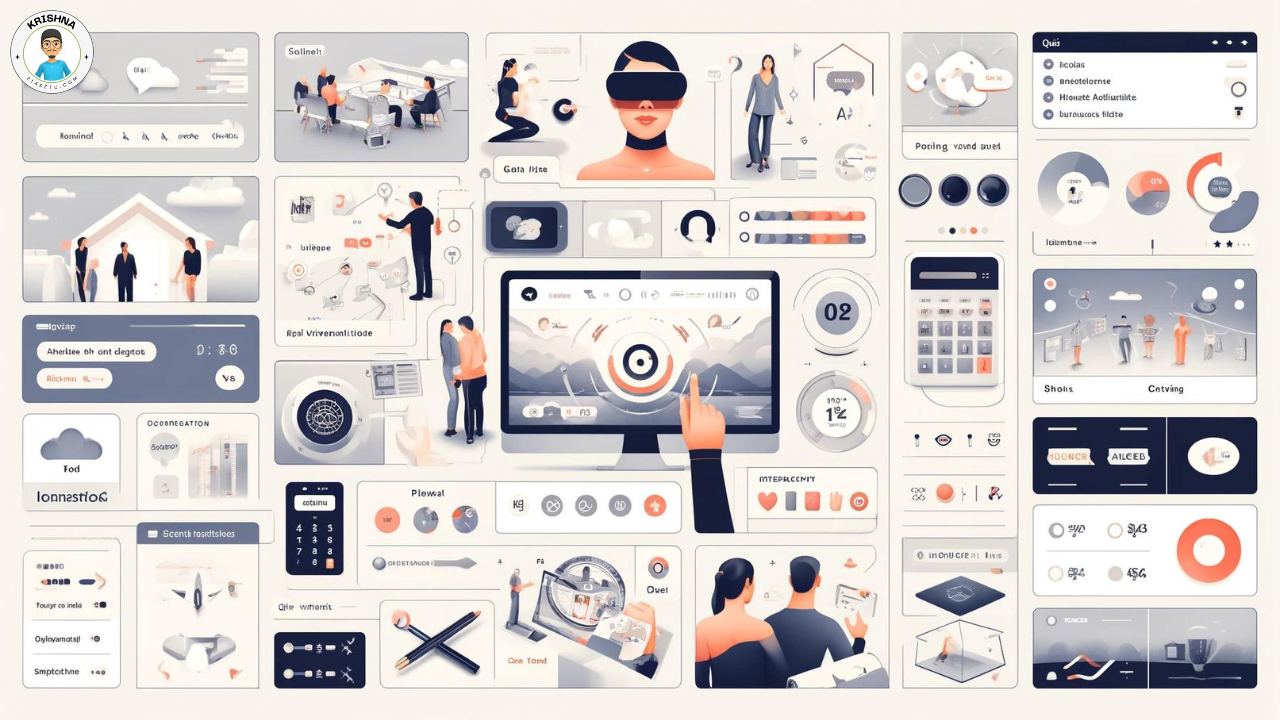
Interactive content is transforming the digital marketing landscape, offering new and exciting ways to engage audiences. From augmented reality (AR) experiences to interactive quizzes, this type of content not only captures attention but also encourages active participation. Let’s dive into how interactive content is boosting engagement rates and how you can leverage these tools in your marketing strategy.How Free AI Hyper-Personalization is Boosting Customer Engagement
1. The Power of Interactive Content
Interactive content stands out in a sea of static information. It demands attention and invites users to engage actively, making the experience memorable and impactful. This engagement translates to higher retention rates, better customer satisfaction, and increased conversion rates.
2. Types of Interactive Content
There are various forms of interactive content that you can incorporate into your digital marketing strategy:
Augmented Reality (AR): AR overlays digital elements onto the real world, providing immersive experiences. For instance, brands can use AR to allow customers to visualize products in their own space before making a purchase.
Quizzes and Polls: These are excellent for engaging users, collecting data, and providing personalized experiences. Quizzes can educate or entertain, while polls gather valuable feedback and insights.
Interactive Infographics: These visually appealing tools allow users to interact with the content, making complex information easier to understand and more engaging.
Calculators: Useful for industries like finance, real estate, and health, calculators offer personalized results based on user input, driving deeper engagement and utility.
360-Degree Videos: These immersive videos allow users to explore a scene or product from every angle, enhancing the storytelling experience.
3. Benefits of Interactive Content
Increased Engagement: Interactive content captures and maintains attention more effectively than static content, leading to longer site visits and higher engagement rates.
Enhanced Learning and Retention: By actively engaging with content, users are more likely to remember the information and find it valuable.
Better User Experience: Interactive content provides a more enjoyable and satisfying experience, which can improve overall customer satisfaction and loyalty.
Rich Data Collection: Engaging users interactively allows businesses to gather valuable data about preferences, behaviors, and feedback, which can inform future marketing strategies.
4. Strategies to Implement Interactive Content
Identify Your Goals: Determine what you want to achieve with your interactive content—whether it’s educating your audience, increasing engagement, or driving sales.
Know Your Audience: Tailor your interactive content to your target audience’s preferences and behaviors. Understanding your audience will help you create content that resonates and engages.
Choose the Right Tools: Use the appropriate platforms and tools to create your interactive content. There are numerous software options available for AR, quizzes, interactive videos, and more.
Promote Your Content: Share your interactive content across various channels, including social media, email newsletters, and your website, to reach a wider audience.
Measure and Optimize: Regularly analyze the performance of your interactive content using metrics like engagement rates, time spent, and user feedback. Use these insights to refine and improve your content strategy.
5. Case Studies of Successful Interactive Content
Sephora’s Virtual Artist: Sephora uses AR technology to allow customers to try on makeup virtually. This interactive experience has increased customer engagement and boosted online sales.
BuzzFeed Quizzes: BuzzFeed’s interactive quizzes are widely popular, driving significant traffic and engagement. These quizzes are designed to be fun, shareable, and often provide personalized results.
The New York Times’ Interactive Articles: The New York Times incorporates interactive infographics and data visualizations in their articles to provide deeper insights and a more engaging reading experience.
Wrapping Up
Interactive content is a powerful tool for boosting engagement rates and enhancing the user experience. From AR experiences to quizzes and polls, incorporating interactive elements into your digital marketing strategy can captivate your audience, provide valuable insights, and drive conversions. By understanding your audience and leveraging the right tools, you can create compelling interactive content that stands out in the digital landscape.
FAQs
Q1: What is interactive content?
Interactive content refers to digital content that requires active engagement from users, such as AR experiences, quizzes, polls, and interactive infographics.
Q2: Why is interactive content important?
Interactive content increases engagement, improves user experience, enhances learning and retention, and provides valuable data for businesses.
Q3: How can I create interactive content?
You can create interactive content using various tools and platforms designed for AR, quizzes, interactive videos, and more. Tailor your content to your audience’s preferences and promote it across multiple channels.
Q4: What are some examples of successful interactive content?
Examples include Sephora’s Virtual Artist for trying on makeup virtually, BuzzFeed’s popular quizzes, and The New York Times’ interactive articles with data visualizations.
Q5: How do I measure the success of my interactive content? Measure success using metrics like engagement rates, time spent on content, and user feedback. Use these insights to refine and optimize your content strategy.

